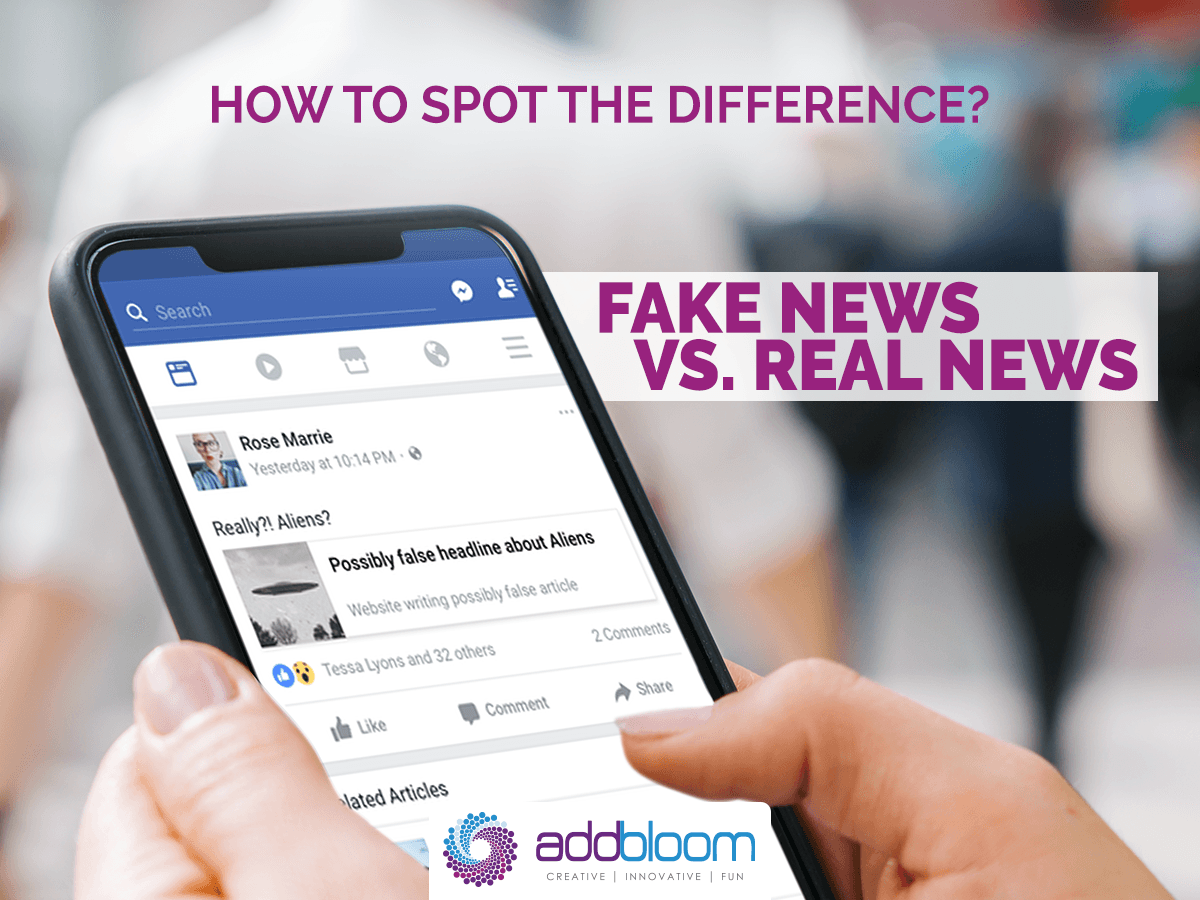How To Spot Fake News On Instagram
November 15, 2019
AddBloom
Blog

Is it True? ! Is it Fake ?! That is the Question
7 Ways to Help You Distinguish between REAL NEWS Vs. FAKE NEWS
When social media feeds are flooded with information, and Whatsapp becomes a tricky messenger from personal connections on groups, it becomes very easy to be confused between what news is true and what is fake.
And while fake news is nothing new, yet fabricating images, videos and voice notes is becoming more advanced, blurring the capacity to distinguish authenticity.
Instagram, Facebook, Twitter, Whatsapp and other social networks are now a hotbed for Fake viral claims used with the objective of purposeful pushing publicity and propaganda to fool readers into thinking a piece of news is real, when it is NOT.
This is why we have put together 7 ways to help distinguish between what is REAL NEWS and what is FAKE NEWS:
- Consider the source
Is it safe to say that you are familiar with this news account? Is it legitimate and genuine? Has it been reliable in the past? If not, you may not want to trust it. If it’s a forwarded voice message, ask for the source from the sender, and try to double check the facts on credible news providers and how valid the content is.
- Consider the photos
Bogus news stories and posts regularly contain manipulated images, audios or videos that can be edited to mislead you. Sometimes the photo may be authentic, however, taken outside of any relevant connection to the subject at hand. You can search for the photo or image to verify where it came from, or look at trusted news sources to see if the story in hand is being reported elsewhere.
- Check the date
Some false Instagram posts/stories aren’t totally fake, but rather distortions of real events. These mendacious claims can take a real news story and twist what it says or even claim that something that happened quite a while in the past is related to current developments.
- Is this some sort of joke?
Keep in mind that there is such a concept known as satire/parody. Normally, it’s obviously labeled as such, and sometimes it’s even amusing. But it isn’t the news. However, there’s the more debatable forms of satire, designed to pull one over on the user. These posts are also designed to encourage clicks and generate money for the creator through ad revenue. Yet, they aren’t news.
- Check your biases
Confirmation bias drives individuals to take more trust in information that affirm their beliefs and discount information that doesn’t. The next time you’re automatically shocked at a piece of content concerning a person or an event you oppose, pause for a minute to look at it, and before sharing make sure you circle back and check the source.
- Consult the experts:
We know you’re busy, and a portion of this debunking requires significant investment and time. Be that as it may, fact-checkers get paid to do this sort of work. Between the several fact-checker sites, it’s likely at least one has already fact-checked the most recent viral case to pop up in your social media news feed or through any communication platform.
- Instagram/Facebook fact-check:
Facebook and Instagram earlier have introduced Fact Checks through working with certified third-party fact-checkers. This is done either through individuals reporting content as “it’s inappropriate”, and “false information” or Fact Checkers identifying content and flagging it as such. The normal procedure that Facebook uses to treat flagged posts is making them appear less on user’s news feeds. Pages or accounts continuously noted for sharing false content will be notified and will face restrictions.
And lastly, both Instagram and Facebook introduced “false information” labels to prevent fake news from going viral. The new update informs users when a post contains misinformation. The labels will appear on posts and Instagram’s main feed. Users will still be able to view the original post, but they’ll have to click “See Post” to get there.
Always remember: News readers themselves remain the first line of defense against fake news.
Written by Stephanie Matar
Social Media Manager